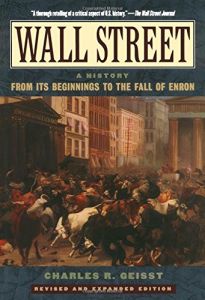Join getAbstract to access the summary!

Join getAbstract to access the summary!
Charles R. Geisst
Wall Street
A History: From Its Beginnings to the Fall of Enron
Oxford UP, 2004
What's inside?
The U.S. stock market began as a quaint outdoor commodities exchange. Only one thing hasn`t changed: the corruption.
Recommendation
This comprehensive book provides a wealth of detail about the origins and history of the financial institutions, private and public, that underpin Wall Street and the economy of the United States - and therefore, to an extent, much of the rest of the world. Author Charles R. Geisst presents a detailed discussion of the contest between the forces of libertarianism and regulation. Detail is both the strength and the weakness of this book. Often, the author has trouble organizing it all, and the book would have benefited from a stricter editor to help distill the "story" in this history. Despite such problems, however, the factual basis is rich and intriguing. getAbstract believes that readers interested in U.S. financial history, especially those in the investment and financial services industries, will want to read this book.
Summary
About the Author
Charles R. Geisst is a professor of finance in the school of business at Manhattan College. He is the author of Wheels of Fortune and Deals of the Century.




















Comment on this summary